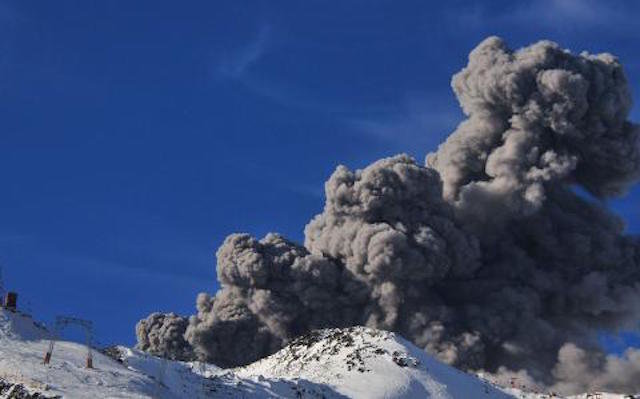
© DMC Photography/FacebookSkiers were shocked when a volcano erupted next to them in Chile
Avalanches, extreme cold, and fast-changing weather conditions are just a few of the natural dangers that skiers and snowboarders must be aware of and prepare themselves for when out exploring the mountains.
However, skiers in the Bío Bío region of Chile in South America on August 2 were struck by an unexpected threat - an erupting volcano. The Nevados de Chillán volcano began to billow smoke, ash and gases while a group from ski and snowboard guide company Powder Quest were on the neighbouring slopes.
Skier Jess McMillan caught the whole thing on film and posted the video on her Instagram feed, with the caption: "So crazy to see a #volcano #eruption @nevadosdechillan Very cool way to end an epic bluebird powder day @powderquest #ladiesfreeridecamp."
Experts from the website Volcano Discovery suggest the eruption started around 5:10pm on August 1 - the dense plume of ash from the crater, which is off-limits to skiers and snowboarders, rose to 3,600m and quickly dispersed. In total the activity only lasted a few minutes, but nonetheless caught those enjoying the sunny South American slopes off guard.
Jess said: "The volcano has been giving off gases all season, there's now a closed area surrounding it to keep skiers and snowboarders a safe distance away. The volcano has emitted gases twice since in the past three days - it makes no sound and there's no earthquake when it happens."
Comment: See also: Wildfires burn across 7 Western states, prompt evacuations